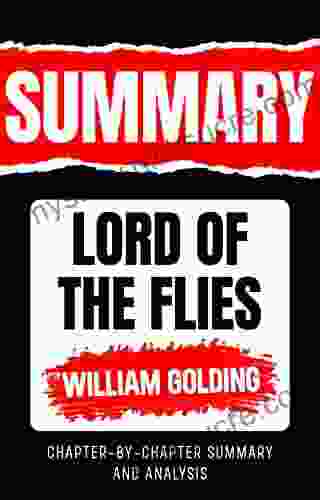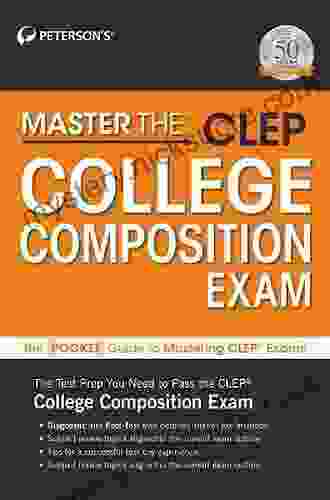Strike Patterns Notes From Postwar Laos

4.7 out of 5
| Language | : | English |
| File size | : | 5897 KB |
| Text-to-Speech | : | Enabled |
| Screen Reader | : | Supported |
| Enhanced typesetting | : | Enabled |
| Word Wise | : | Enabled |
| Print length | : | 183 pages |
Laos, a landlocked country in Southeast Asia, has experienced significant political and economic transformations since the end of the Vietnam War in 1975. The establishment of the Lao People's Democratic Republic (Lao PDR) marked a shift in the country's governance, leading to a centrally planned economy and a one-party political system. During this period, the government prioritized economic development and social welfare, which resulted in improvements in infrastructure, education, and healthcare. However, the economic policies and political structures also engendered challenges, including limited political participation, suppression of civil liberties, and economic inequality.
One of the notable aspects of Laos' postwar era has been the emergence of strike patterns as a form of labor protest and collective bargaining. Strikes have played a significant role in shaping labor relations, influencing government policies, and contributing to the country's evolving political landscape. This article aims to provide a comprehensive overview of strike patterns in postwar Laos, examining their historical context, motivations, and outcomes, while shedding light on the complex dynamics of labor relations in the country.
Historical Context
The roots of strike patterns in Laos can be traced back to the country's pre-war labor movements. During the colonial era under French rule, labor organizations and trade unions emerged to advocate for workers' rights and improve working conditions. However, these organizations were often suppressed or co-opted by the colonial government, limiting their effectiveness and impact.
In the years following independence, the Laotian government adopted a socialist orientation, which initially led to an expansion of labor rights and the establishment of trade unions under the Lao Federation of Trade Unions (LFTU). However, the government's authoritarian rule and economic policies gradually eroded labor rights, leading to growing discontent among workers.
Motivations for Strikes
The motivations for strikes in postwar Laos have been multifaceted, encompassing economic, political, and social factors. Prominent among these motivations have been:
Economic Grievances:
Economic grievances, such as low wages, poor working conditions, and unpaid salaries, have been a primary driver of strikes in Laos. Workers have often resorted to strikes as a means to demand better pay, improved benefits, and safer working environments.
Political Demands:
Beyond economic concerns, strikes have also been used as a form of political protest in Laos. Workers have participated in strikes to express dissatisfaction with government policies, demand democratic reforms, and call for greater political freedoms.
Social Justice Issues:
Strikes have sometimes been motivated by social justice issues, such as discrimination, inequality, and lack of access to essential services. Workers have used strikes to highlight these concerns and advocate for a more just and equitable society.
Strike Patterns
Strike patterns in postwar Laos have varied over time, influenced by political and economic conditions, as well as the government's response to labor unrest.
Early Strikes (1975-1985):
In the aftermath of the Vietnam War, strikes in Laos were primarily localized and small-scale. These early strikes were often spontaneous and unorganized, driven by specific grievances or economic disputes at individual workplaces.
Organized Strikes (1985-1995):
The 1980s and 1990s witnessed a rise in organized strikes in Laos, as workers became more aware of their rights and the potential for collective action. The LFTU played a more prominent role in organizing and coordinating strikes, which became larger in scale and more sustained.
Institutionalized Strikes (1995-Present):
Since the mid-1990s, strikes in Laos have become more institutionalized, with the government recognizing the right to strike as part of the country's labor laws. While strikes remain tightly regulated, they have become an established form of labor protest and negotiation.
Government Response
The Laotian government's response to strikes has evolved over time, reflecting changing political and economic circumstances.
Early Suppression (1975-1985):
In the early years after the war, the government's response to strikes was often harsh, involving the use of force, arrests, and dismissals of workers. Strikes were viewed as a threat to the government's authority and the stability of the new socialist state.
Conciliation and Negotiation (1985-1995):
As the economy began to open up and the government sought to attract foreign investment, it adopted a more conciliatory approach towards strikes. The government recognized the need to address workers' grievances and engaged in negotiations to resolve labor disputes.
Legalization and Regulation (1995-Present):
With the adoption of the Labor Law in 1995, the right to
4.7 out of 5
| Language | : | English |
| File size | : | 5897 KB |
| Text-to-Speech | : | Enabled |
| Screen Reader | : | Supported |
| Enhanced typesetting | : | Enabled |
| Word Wise | : | Enabled |
| Print length | : | 183 pages |
Do you want to contribute by writing guest posts on this blog?
Please contact us and send us a resume of previous articles that you have written.
 Fiction
Fiction Non Fiction
Non Fiction Romance
Romance Mystery
Mystery Thriller
Thriller SciFi
SciFi Fantasy
Fantasy Horror
Horror Biography
Biography Selfhelp
Selfhelp Business
Business History
History Classics
Classics Poetry
Poetry Childrens
Childrens Young Adult
Young Adult Educational
Educational Cooking
Cooking Travel
Travel Lifestyle
Lifestyle Spirituality
Spirituality Health
Health Fitness
Fitness Technology
Technology Science
Science Arts
Arts Crafts
Crafts DIY
DIY Gardening
Gardening Petcare
Petcare Deirdre V Lovecky
Deirdre V Lovecky James Miller
James Miller Robert Garland
Robert Garland Melanie Anne Phillips
Melanie Anne Phillips Frederick Jackson Turner
Frederick Jackson Turner Leslie A Sams
Leslie A Sams Dory Willer
Dory Willer Dianne Maroney
Dianne Maroney M E Brines
M E Brines Luc Mehl
Luc Mehl William Ian Miller
William Ian Miller Winky Lewis
Winky Lewis Jim Supica
Jim Supica Lisa Hopp
Lisa Hopp Maha Alkurdi
Maha Alkurdi William L Sullivan
William L Sullivan Lucy Cooke
Lucy Cooke Kathleen Flinn
Kathleen Flinn E Ink Utilizer
E Ink Utilizer Tom Cunliffe
Tom Cunliffe Vladimir Lossky
Vladimir Lossky Gregory A Kompes
Gregory A Kompes Cornelia Pelzer Elwood
Cornelia Pelzer Elwood Ron Senyor
Ron Senyor Nedu
Nedu Richard Harding Davis
Richard Harding Davis Bruce Sutherland
Bruce Sutherland Lisa Feldman Barrett
Lisa Feldman Barrett Dvora Meyers
Dvora Meyers Norman Thelwell
Norman Thelwell Jason Runkel Sperling
Jason Runkel Sperling Jim Wiese
Jim Wiese John Grehan
John Grehan Scott Mactavish
Scott Mactavish Della Ata Khoury
Della Ata Khoury Stacey Rourke
Stacey Rourke R Scott Thornton
R Scott Thornton Martina D Antiochia
Martina D Antiochia Upton Sinclair
Upton Sinclair Elizabeth Laing Thompson
Elizabeth Laing Thompson Nikki Carroll
Nikki Carroll Michelle Travis
Michelle Travis Jessica Howard
Jessica Howard Sophie Messager
Sophie Messager Philip Purser Hallard
Philip Purser Hallard Susan Orlean
Susan Orlean Ronit Irshai
Ronit Irshai Suzanne Young
Suzanne Young Elizabeth Dupart
Elizabeth Dupart Donna Goldberg
Donna Goldberg Tibor Rutar
Tibor Rutar Scarlett V Clark
Scarlett V Clark Stian Christophersen
Stian Christophersen Sarah Ockwell Smith
Sarah Ockwell Smith Chad Eastham
Chad Eastham David Eagleman
David Eagleman Emily Writes
Emily Writes Nigel Cawthorne
Nigel Cawthorne Frank Muir
Frank Muir Donna R Causey
Donna R Causey Lee Jackson
Lee Jackson Ralph Galeano
Ralph Galeano David Cannon
David Cannon Ronald T Potter Efron
Ronald T Potter Efron Ron Rapoport
Ron Rapoport Destiny S Harris
Destiny S Harris Martina Mcbride
Martina Mcbride Matt Racine
Matt Racine Warwick Deeping
Warwick Deeping Mark Stavish
Mark Stavish Collins Easy Learning
Collins Easy Learning Lottie Bildirici
Lottie Bildirici Romola Anderson
Romola Anderson Shmuel Goldberg
Shmuel Goldberg Ed Housewright
Ed Housewright Joanne Kimes
Joanne Kimes Guy Grieve
Guy Grieve Hugh Aldersey Williams
Hugh Aldersey Williams Mary C Townsend
Mary C Townsend Ivar Dedekam
Ivar Dedekam S M Kingdom
S M Kingdom Kindle Edition
Kindle Edition Mathew Orton
Mathew Orton Tom Bass
Tom Bass C S Lewis
C S Lewis Sheila A Sorrentino
Sheila A Sorrentino Arrl Inc
Arrl Inc Lingo Mastery
Lingo Mastery Joseph Correa
Joseph Correa Sophie D Coe
Sophie D Coe Kruti Joshi
Kruti Joshi C M Carney
C M Carney Rob Pate
Rob Pate Sterling Test Prep
Sterling Test Prep Pamela Weintraub
Pamela Weintraub Julietta Suzuki
Julietta Suzuki Ashley Eckstein
Ashley Eckstein Kevin Howell
Kevin Howell Dr Monika Chopra
Dr Monika Chopra Byron L Reeder
Byron L Reeder J Maarten Troost
J Maarten Troost Declan Lyons
Declan Lyons Ashley Christensen
Ashley Christensen Emt Basic Exam Prep Team
Emt Basic Exam Prep Team Max Prasac
Max Prasac Matthew Marchon
Matthew Marchon Ivy Hope
Ivy Hope Pia Nilsson
Pia Nilsson John Kretschmer
John Kretschmer Sue Elvis
Sue Elvis Carlos I Calle
Carlos I Calle David Savedge
David Savedge Buddy Levy
Buddy Levy Eric R Dodge
Eric R Dodge John H Falk
John H Falk Daniel Prince
Daniel Prince Wilhelm Reich
Wilhelm Reich Rebecca Musser
Rebecca Musser Sammy Franco
Sammy Franco Zachery Knowles
Zachery Knowles Mike X Cohen
Mike X Cohen Valerie Poore
Valerie Poore Edward Humes
Edward Humes J D Williams
J D Williams Shelby Hailstone Law
Shelby Hailstone Law Sandra Niche
Sandra Niche Shawna Richer
Shawna Richer Paul A Offit
Paul A Offit Barbara Acello
Barbara Acello Henry Malone
Henry Malone Karen J Rooney
Karen J Rooney Max Lugavere
Max Lugavere Marc Bona
Marc Bona Nawuth Keat
Nawuth Keat Jim West
Jim West Caleb J Tzilkowski
Caleb J Tzilkowski Olivier Doleuze
Olivier Doleuze Rowena Bennett
Rowena Bennett Marla Taviano
Marla Taviano Rand Cardwell
Rand Cardwell Lauren Manoy
Lauren Manoy Trevor Thomas
Trevor Thomas Paul Rabinow
Paul Rabinow Michael Mewshaw
Michael Mewshaw Jacob Erez
Jacob Erez Carol Inskipp
Carol Inskipp Ransom Riggs
Ransom Riggs Duncan Steel
Duncan Steel K C Cole
K C Cole Hecateus Apuliensis
Hecateus Apuliensis Sylvia Williams Dabney
Sylvia Williams Dabney Kevin Houston
Kevin Houston Skip Lockwood
Skip Lockwood Bryce Carlson
Bryce Carlson Lynette Noni
Lynette Noni C J Archer
C J Archer Tamara Ferguson
Tamara Ferguson Bruce Van Brunt
Bruce Van Brunt Charles Staley
Charles Staley David Wilber
David Wilber Chris Bonington
Chris Bonington Pam Flowers
Pam Flowers Mcgraw Hill
Mcgraw Hill Peter J D Adamo
Peter J D Adamo Kaplan Test Prep
Kaplan Test Prep Richard Henry Dana
Richard Henry Dana David Nathan Fuller
David Nathan Fuller Om Krishna Uprety
Om Krishna Uprety John Vince
John Vince Martin Davies
Martin Davies Simon Michael Prior
Simon Michael Prior John Burroughs
John Burroughs Meg Cabot
Meg Cabot Lewis Kirkham
Lewis Kirkham Victoria Honeybourne
Victoria Honeybourne Orangepen Publications
Orangepen Publications Nicholas Tomalin
Nicholas Tomalin Wayne Coffey
Wayne Coffey Sara Gaviria
Sara Gaviria Elizabeth May
Elizabeth May Jack Disbrow Gunther
Jack Disbrow Gunther Helen Webster
Helen Webster Sallyann Beresford
Sallyann Beresford Peterson S
Peterson S Steve Guest
Steve Guest Dennis Adler
Dennis Adler Michael Chatfield
Michael Chatfield Kacen Callender
Kacen Callender John Flanagan
John Flanagan Dan Romanchik Kb6nu
Dan Romanchik Kb6nu James W Anderson
James W Anderson Huberta Wiertsema
Huberta Wiertsema Maria Van Noord
Maria Van Noord Elmer Keith
Elmer Keith Rick Trickett
Rick Trickett William Ellet
William Ellet Stedman Graham
Stedman Graham Doug Cook
Doug Cook Celeste Headlee
Celeste Headlee Richard Drake
Richard Drake Larry Larsen
Larry Larsen Sam Priestley
Sam Priestley Mark Stanton
Mark Stanton Kathy Woods
Kathy Woods Marco Wenisch
Marco Wenisch William Wood
William Wood Simon A Rego
Simon A Rego Douglas Preston
Douglas Preston Oliver Sacks
Oliver Sacks Dave Bosanko
Dave Bosanko Eugenia G Kelman
Eugenia G Kelman Bryan Litz
Bryan Litz Craig Martelle
Craig Martelle Sonia Shah
Sonia Shah Jennifer Appel
Jennifer Appel Paige Powers
Paige Powers Christine Mari Inzer
Christine Mari Inzer Ken Sande
Ken Sande Theodora Papatheodorou
Theodora Papatheodorou Joanne V Hickey
Joanne V Hickey Leslie R Schover
Leslie R Schover Jonathan T Gilliam
Jonathan T Gilliam Jennifer L Scott
Jennifer L Scott Jesse Romero
Jesse Romero Konstantinos Mylonas
Konstantinos Mylonas Sarah Jacoby
Sarah Jacoby Jeff Belanger
Jeff Belanger Kyra Phillips
Kyra Phillips Paul Murdin
Paul Murdin Ruthellen Josselson
Ruthellen Josselson R L Medina
R L Medina Tanya Hackney
Tanya Hackney Lsat Unplugged
Lsat Unplugged The Atavist
The Atavist Cecil B Hartley
Cecil B Hartley Michael D Alessio
Michael D Alessio Denise May Levenick
Denise May Levenick Steven W Dulan
Steven W Dulan Heather Balogh Rochfort
Heather Balogh Rochfort Julia Ann Clayton
Julia Ann Clayton Jess J James
Jess J James Heather Jacobson
Heather Jacobson Stephen King
Stephen King Scott Cawthon
Scott Cawthon Tony E Adams
Tony E Adams John J Ratey
John J Ratey Pat Rigsby
Pat Rigsby Erin Beaty
Erin Beaty Healthfit Publishing
Healthfit Publishing Sheri Morehouse
Sheri Morehouse Scott Hartshorn
Scott Hartshorn Mo Gawdat
Mo Gawdat Nicolas Bergeron
Nicolas Bergeron C F Crist
C F Crist Bruce W Harris
Bruce W Harris Marc Van Den Bergh
Marc Van Den Bergh Erin Macy
Erin Macy Leon Speroff
Leon Speroff Lynn Butler Kisber
Lynn Butler Kisber John H Cunningham
John H Cunningham Caroline Manta
Caroline Manta Michael Blastland
Michael Blastland Douglas P Fry
Douglas P Fry Phil Williams
Phil Williams Charles Salzberg
Charles Salzberg Creek Stewart
Creek Stewart Trevelyan
Trevelyan Ian Tuhovsky
Ian Tuhovsky William Rathje
William Rathje Ned Feehally
Ned Feehally Elaine Tyler May
Elaine Tyler May Meriwether Lewis
Meriwether Lewis Matt Price
Matt Price Susan Garcia
Susan Garcia Shea Ernshaw
Shea Ernshaw Roger Marshall
Roger Marshall Graham Norton
Graham Norton Db King
Db King J R Rain
J R Rain Bruce Watt
Bruce Watt Jasmine Shao
Jasmine Shao W D Wetherell
W D Wetherell Thomas Achatz
Thomas Achatz Terry Laughlin
Terry Laughlin Natasha Daniels
Natasha Daniels Natasha Ngan
Natasha Ngan Jill Angie
Jill Angie Don Allen Jr
Don Allen Jr Caitlyn Dare
Caitlyn Dare Diane Lindsey Reeves
Diane Lindsey Reeves Lina K Lapina
Lina K Lapina Niels H Lauersen
Niels H Lauersen Silvia Dunn
Silvia Dunn Hibiki Yamazaki
Hibiki Yamazaki Lily Field
Lily Field Jack Canfield
Jack Canfield Robert Larrison
Robert Larrison Valliappa Lakshmanan
Valliappa Lakshmanan Gary Lewis
Gary Lewis Aaron Reed
Aaron Reed Tim Freke
Tim Freke Matt Baglio
Matt Baglio Leah Zani
Leah Zani Bunmi Laditan
Bunmi Laditan John Moren
John Moren Robert Edward Grant
Robert Edward Grant Lily Raff Mccaulou
Lily Raff Mccaulou Jim Warnock
Jim Warnock Dian Olson Belanger
Dian Olson Belanger Joe Baker
Joe Baker Julie Golob
Julie Golob Thomas Carothers
Thomas Carothers Chris Morton
Chris Morton James Beard
James Beard Shyima Hall
Shyima Hall Joyceen S Boyle
Joyceen S Boyle Thomas Daniels
Thomas Daniels Clement Salvadori
Clement Salvadori Phil Bourque
Phil Bourque Nick Littlehales
Nick Littlehales Judith Merkle Riley
Judith Merkle Riley Tim Glover
Tim Glover Shaunti Feldhahn
Shaunti Feldhahn Martha Finley
Martha Finley Elena Paige
Elena Paige Richard W Voelz
Richard W Voelz Brandy Colbert
Brandy Colbert Tey Meadow
Tey Meadow Kerry H Cheever
Kerry H Cheever Maxine A Goldman
Maxine A Goldman John M Marzluff
John M Marzluff J R Harris
J R Harris Justin Coulson
Justin Coulson Jimmy Chin
Jimmy Chin Tim S Grover
Tim S Grover Law School Admission Council
Law School Admission Council Jane Brocket
Jane Brocket Sherri L Jackson
Sherri L Jackson Ian Leslie
Ian Leslie Max Lucado
Max Lucado Janet Evans
Janet Evans Scott Mcmillion
Scott Mcmillion Dave Rearick
Dave Rearick Emma Warren
Emma Warren Oprah Winfrey
Oprah Winfrey Issai Chozanshi
Issai Chozanshi Steven Kerry Brown
Steven Kerry Brown Bruce Maxwell
Bruce Maxwell Ken Schwaber
Ken Schwaber Albert Jeremiah Beveridge
Albert Jeremiah Beveridge Wyatt Mcspadden
Wyatt Mcspadden Mona Bijjani
Mona Bijjani Jim Kempton
Jim Kempton Paul Lobo
Paul Lobo Matt Mullenix
Matt Mullenix Jeffrey L Kohanek
Jeffrey L Kohanek Stephen Harrison
Stephen Harrison Richard C Francis
Richard C Francis Lee Alan Dugatkin
Lee Alan Dugatkin Lew Freedman
Lew Freedman Dorothy Canfield Fisher
Dorothy Canfield Fisher Richard Barrett
Richard Barrett Katharine Mcgee
Katharine Mcgee Jamie Marich
Jamie Marich Joseph Moss
Joseph Moss Dounya Awada
Dounya Awada Tricia Levenseller
Tricia Levenseller Cathy Glass
Cathy Glass Fiona Beddall
Fiona Beddall Anthony Camera
Anthony Camera Tina Schindler
Tina Schindler Kat Davis
Kat Davis Graham Hancock
Graham Hancock Maurice J Thompson
Maurice J Thompson Carole Bouchard
Carole Bouchard Kevin Panetta
Kevin Panetta Melissa A Priblo Chapman
Melissa A Priblo Chapman Eric P Lane
Eric P Lane Melissa Mullamphy
Melissa Mullamphy Malika Grayson
Malika Grayson Michael Tan
Michael Tan Marcia Scheiner
Marcia Scheiner Nicola Yoon
Nicola Yoon Sarah Baker
Sarah Baker Fern Schumer Chapman
Fern Schumer Chapman Meghan Daum
Meghan Daum Pedro Urvi
Pedro Urvi Laurie Notaro
Laurie Notaro Robert D Gibbons
Robert D Gibbons Chris Pountney
Chris Pountney Charu C Aggarwal
Charu C Aggarwal Greg W Prince
Greg W Prince Dr Tommy John
Dr Tommy John David Tanis
David Tanis Veronica Eden
Veronica Eden Robert Walker
Robert Walker Lois Lowry
Lois Lowry Ira K Wolf
Ira K Wolf Cassandra Mack
Cassandra Mack Emily Lowry
Emily Lowry Philippe Karl
Philippe Karl Richard Bullivant
Richard Bullivant Helen Zuman
Helen Zuman Elizabeth Anne Wood
Elizabeth Anne Wood Linda Rosenkrantz
Linda Rosenkrantz Tyler Trent
Tyler Trent Sarah Berman
Sarah Berman Jen Howver
Jen Howver Dina Nayeri
Dina Nayeri Leah Hazard
Leah Hazard John R Mabry
John R Mabry David Martin
David Martin Vivian Foster
Vivian Foster Carrie Hope Fletcher
Carrie Hope Fletcher Freya Pickard
Freya Pickard Craig Callender
Craig Callender Matthew Warner Osborn
Matthew Warner Osborn Darcy Lever
Darcy Lever Fmg Publications Special Edition
Fmg Publications Special Edition Carrie Marie Bratley
Carrie Marie Bratley Mark Hansen
Mark Hansen Don S Lemons
Don S Lemons Lianna Marie
Lianna Marie Mark Young
Mark Young Jeff Scheetz
Jeff Scheetz Rita Golden Gelman
Rita Golden Gelman John Jamieson
John Jamieson Stella Cottrell
Stella Cottrell Nicola S Dorrington
Nicola S Dorrington Susan Frederick Gray
Susan Frederick Gray Maren Stoffels
Maren Stoffels Keith Brewer
Keith Brewer Carmen Davenport
Carmen Davenport Nick Gamis
Nick Gamis Marisa Peer
Marisa Peer Kelly Rowland
Kelly Rowland Ivan Gridin
Ivan Gridin Howard E Mccurdy
Howard E Mccurdy Earl G Williams
Earl G Williams Jessica Holsman
Jessica Holsman Vincent Chidindu Asogwa
Vincent Chidindu Asogwa Katie Fallon
Katie Fallon Kevin A Morrison
Kevin A Morrison Kendall Rose
Kendall Rose Katherine D Kinzler
Katherine D Kinzler Michael A Tompkins
Michael A Tompkins Elisabeth Elliot
Elisabeth Elliot L W Jacobs
L W Jacobs George Daniel
George Daniel Samantha De Senna Fernandes
Samantha De Senna Fernandes Francis Glebas
Francis Glebas E W Barton Wright
E W Barton Wright Jim Al Khalili
Jim Al Khalili Roger J Davies
Roger J Davies Robert Moor
Robert Moor Mary Pagones
Mary Pagones Sarah Prager
Sarah Prager Albert Rutherford
Albert Rutherford Veronica Roth
Veronica Roth William M Baum
William M Baum Nick Tumminello
Nick Tumminello Jennifer Rose
Jennifer Rose Gary Mayes
Gary Mayes Cal Newport
Cal Newport Narain Moorjani
Narain Moorjani Jared Diamond
Jared Diamond James Goi Jr
James Goi Jr Steve Barrett
Steve Barrett Michael Lear Hynson
Michael Lear Hynson Charles Sanger
Charles Sanger Cameron Mcwhirter
Cameron Mcwhirter Joel Best
Joel Best Michael Gurian
Michael Gurian Peter Bodo
Peter Bodo Thomas Deetjen
Thomas Deetjen Tyler Burt
Tyler Burt Dan Flores
Dan Flores Troy Horne
Troy Horne Neville Goddard
Neville Goddard Winslow Tudor
Winslow Tudor Megan Miller
Megan Miller Dick Hannula
Dick Hannula Robert A Cutietta
Robert A Cutietta
Light bulbAdvertise smarter! Our strategic ad space ensures maximum exposure. Reserve your spot today!

 Yasunari KawabataEpidemiology for Athletic Trainers: Integrating Evidence-Based Practice for...
Yasunari KawabataEpidemiology for Athletic Trainers: Integrating Evidence-Based Practice for...
 Ernest J. GainesSummary of Lord of the Flies: A Timeless Classic About the Dark Side of Human...
Ernest J. GainesSummary of Lord of the Flies: A Timeless Classic About the Dark Side of Human... Dwight BlairFollow ·8.1k
Dwight BlairFollow ·8.1k Raymond ParkerFollow ·11k
Raymond ParkerFollow ·11k Kevin TurnerFollow ·10.6k
Kevin TurnerFollow ·10.6k Alex ReedFollow ·11.4k
Alex ReedFollow ·11.4k Terence NelsonFollow ·9.8k
Terence NelsonFollow ·9.8k Harold PowellFollow ·3.7k
Harold PowellFollow ·3.7k Isaiah PowellFollow ·7.1k
Isaiah PowellFollow ·7.1k Salman RushdieFollow ·12k
Salman RushdieFollow ·12k

 Henry David Thoreau
Henry David ThoreauHow To Bake In Unique Way: Unleash Your Culinary...
Baking is an art form that transcends the...

 F. Scott Fitzgerald
F. Scott FitzgeraldAcademic Magic: Unveil the Secrets of The Last Magus
Delve into a Realm of...

 John Green
John GreenThe Digitally Agile Researcher in UK Higher Education:...
In the rapidly...

 George Orwell
George OrwellZinc: Sources And Significance To Human Health
Zinc, an essential trace mineral, plays a...

 Mario Simmons
Mario SimmonsToo Scared to Tell: A Harrowing and Thought-Provoking...
In the realm...
4.7 out of 5
| Language | : | English |
| File size | : | 5897 KB |
| Text-to-Speech | : | Enabled |
| Screen Reader | : | Supported |
| Enhanced typesetting | : | Enabled |
| Word Wise | : | Enabled |
| Print length | : | 183 pages |










